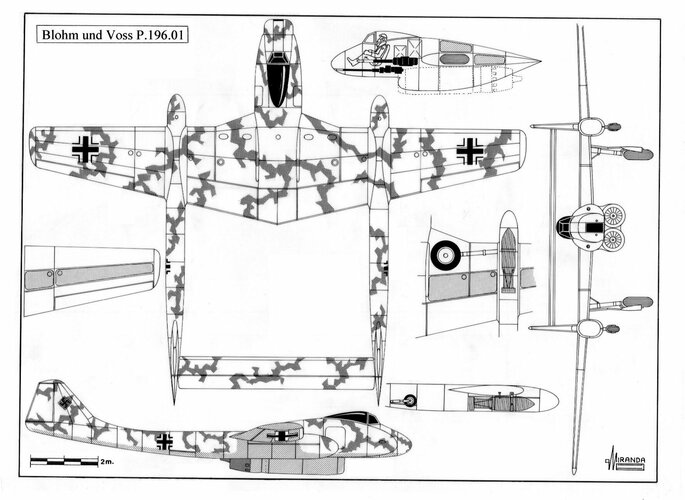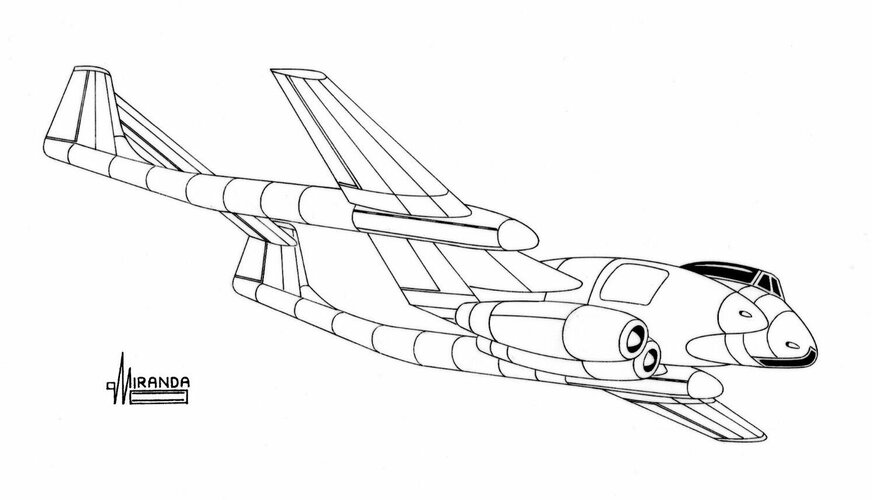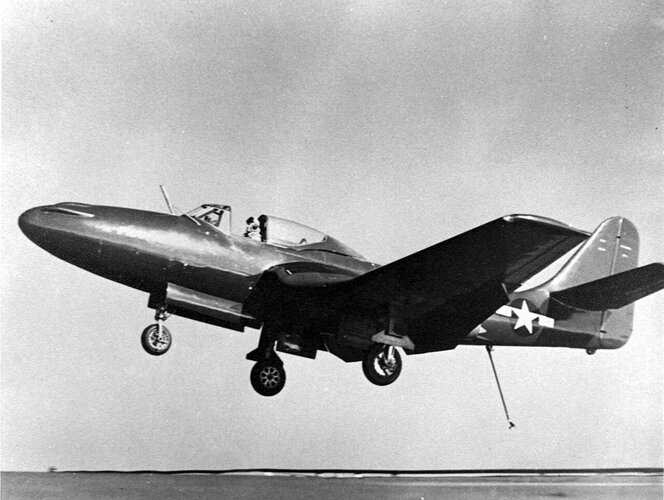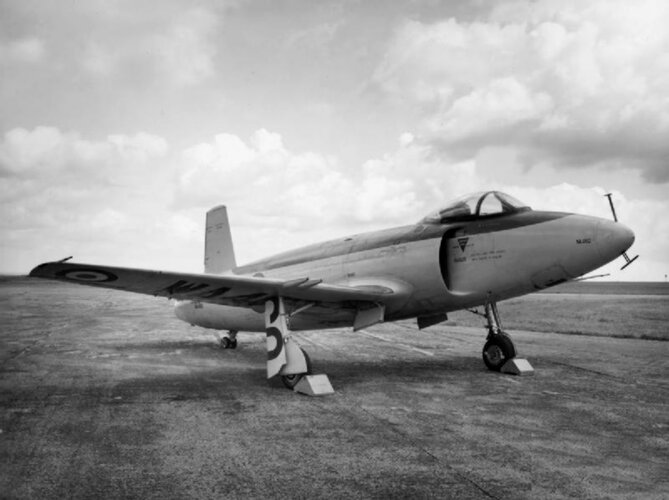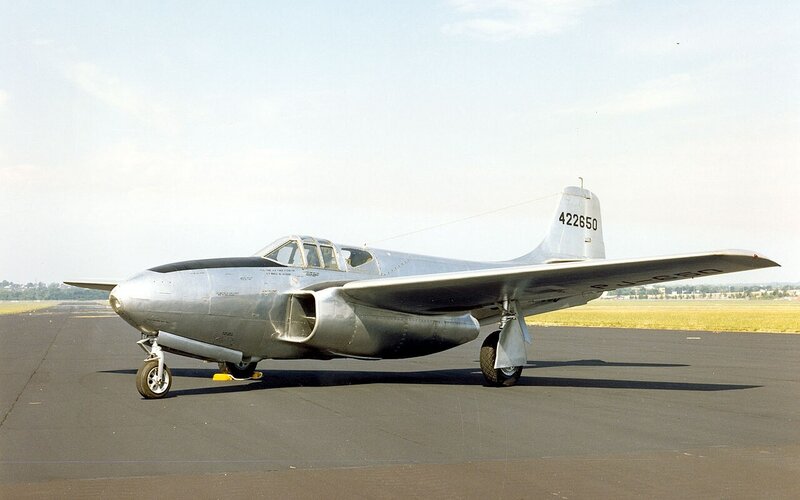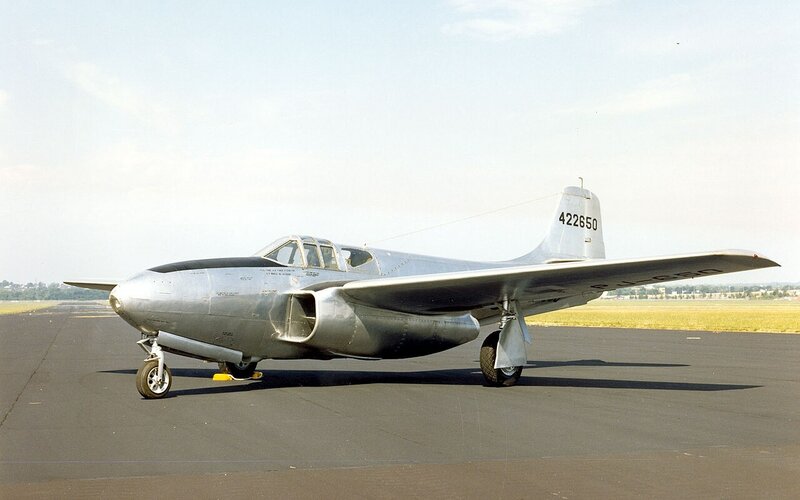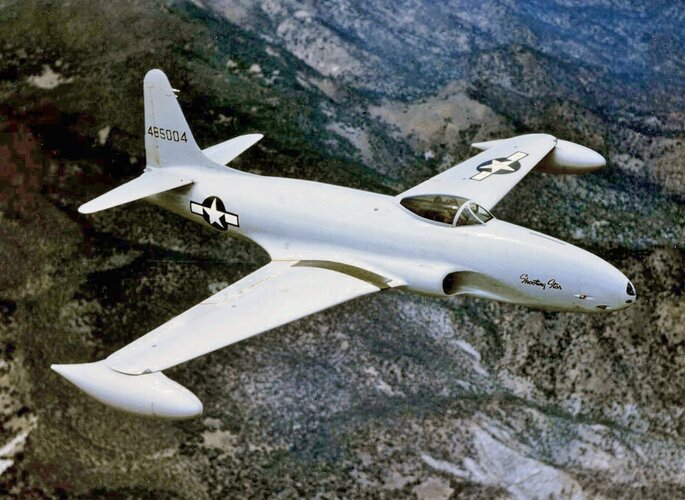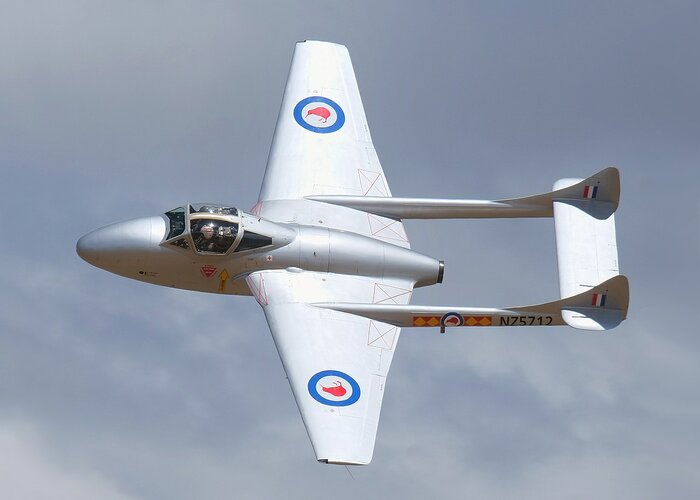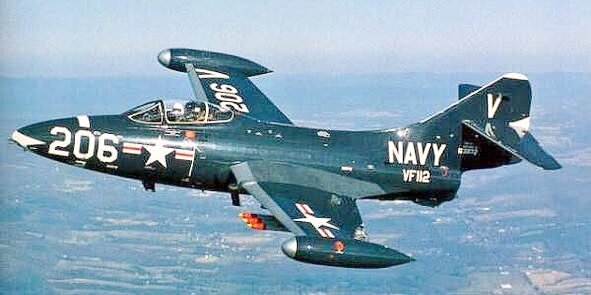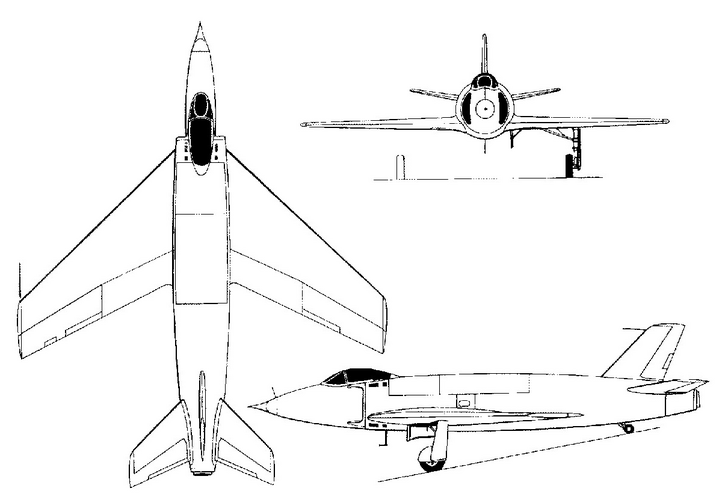You are using an out of date browser. It may not display this or other websites correctly.
You should upgrade or use an alternative browser.
You should upgrade or use an alternative browser.
All werd dive bomber projects?
- Thread starter Norse
- Start date
Why ?
I'm trying to explain what a jet Northrop bt would look like essentially a jak 15 nose (with a jet in front and tall pipe on the bottom) and a Northrop BT-1 body wings landing gear etc I'm look for some Photoshop images of what it wold it look like?
I don't think this belongs on this forum. Probably better to do on What if Modelers Forum or Beyond The Sprues.
- Joined
- 19 July 2016
- Messages
- 3,973
- Reaction score
- 3,027
Those are completely different forums, nothing do do with this here secret projects forum.
You would need to join those forums at the links provided.
You would need to join those forums at the links provided.
Avimimus
ACCESS: Top Secret
- Joined
- 15 December 2007
- Messages
- 2,272
- Reaction score
- 579
I suppose the real issue is that dive bombers appear to be stationary during the dive (as viewed from point defense anti-aircraft guns)... jet engines are also poor at acceleration - so a jet engine would just improve cruise speeds, but wouldn't really help with the dive attack or the climbing out (which would be just as vulnerable).
IRL there was a tendency to use shallower dives along with bombing computers to make intercept difficult... but these weren't true dive bombing techniques.
IRL there was a tendency to use shallower dives along with bombing computers to make intercept difficult... but these weren't true dive bombing techniques.
martinbayer
ACCESS: Top Secret
- Joined
- 6 January 2009
- Messages
- 2,868
- Reaction score
- 2,947
Go on...

Henschel Hs 132 - Wikipedia
- Joined
- 22 January 2006
- Messages
- 4,070
- Reaction score
- 1,597
Dive bombing was developed to because bombsight technology alone didn't allow the required accuracy for tactical aircraft until the 50's. This is why, basically, no jet powered bombers existed.I change it to just jet powered Dive bombers?
Justo show you one of the few ;-)

Bombsight - Wikipedia
Speaking a jet version of a 1930s dive bomber is nothing but an aesthetic fantasy.
So if you want to produce an illustration just go on and enjoy, but there's no enginery or alternative historical background for it.
On post #4 you have the best forums in internet to enjoy and learn about that pure fantasy subject. Many members here are also active on it.
This forum is basically focused on real or, at least, likely technology
Dilandu
I'm dissatisfied, which means, I exist.
By the time jet power became available, dive bombers were already a dying breed. The fighter-bomber was a much more efficient concept; less restricted, capable of carrying much greater payload and capable of protecting itself in air combat. The problem of reliably hitting small tactical targets was basically solved by rockets, which could be fired off any attack plane, not dedicated dive bomber.Like what if a country wanted to replace it's Northrop BT-1s with a jet plane dive bomber but decided to convert it's BT-1 to jet power but all this in the 30s if jets where introduced earlier?
On October 20, 1942 the Technisches Amt issued a specification calling for a Schnellbomber (fast bomber) with 1,000 kg payload, a penetration depth of 1,046 km (one third of the operational range) and a top speed of 700 km/h, later on increased to 1,000 km/h, at operational altitude.
In January 1943 the American bombers based in England started daylight massive incursions over the Reich. Simultaneously, the RAF started to use the H2S cartographic radar that greatly improved the accurateness of night bombing. The German defences, in spite of their sophisticated early warning network, could not stop them.
The Bomber Command launched 600 tons of bombs over Berlin on March 1, but he German retaliation meant the loss of 57 bombers for the Luftwaffe, with the mediocre result of 100 tons launched at London outskirts.
After the failure of the Me 210, the Germans did not have anything to compete against the British Mosquito. During a conference in Karinhall, on March 18, Göring warned the representatives of the aeronautical industry that he would not approve any new project until the requirement in the 1942 specification was met.
The Horten brothers decided to update its design HVII Schnell-kampflugzeug of March 26, 1942, unifying it with one of the first versions of the Ho IX jet fighter (September 1942) to create a machine that fulfilled the wishes of the Reichmarschall.
The Technisches Amt had already rejected the construction of the Lippisch Schnellbomber P.11 in May 1943, recommending the conversion into Zerstörer (heavy fighter-destroyer) in August.
The Horten schnellbomber received the official approval on 28 September, but an order to transform it into a high altitude fighter under the Jagernöttprogram (emergency fighter contest) arrived in April 1944. In August of the same year, the Focke-Wulf firm proposed to build the Schnellbomber P.310239-10 a tailless delta similar in performances to the Lippisch model. This was an extremely advanced design for its time, known in the specialised literature today as Projekt 1000 x 1000 x 1000.
The Blohm und Voss P. 196 was a single seat jet bomber designed in 1944 to meet the Schnellbomber specification.
Project 196 was 189 km/h faster than the Hawker Tempest Mk. V, 97 km/h faster than the Gloster Meteor and 20 km/h faster than the Messerschmitt Me 262 a, carrying 500 kg of bombs.
It was also very manoeuvrable at low altitude thanks to its widely spaced booms and was equipped with large split flaps that acted as airbrakes during the dive bombing.
Blohm und Voss P.196.01-01 technical data
Type: single seat ground attack aircraft, wingspan: 15.3 m, length: 11.6 m, height: 3.75 m, wing area: 33.4 sq. m, Max weight: 8,500 kg, Max speed: 890 Km/h at 5,000 m, power plant: two BMW 003C turbojets each rated at 900 kg static thrust, armament: two nose mounted Mk 103/30 (or one MK 412/50) anti-tank cannons, two nose mounted MG 151/20 rapid-fire cannons and two SC 250 bombs housed into the booms.
Blohm und Voss P.196.01-02 technical data
Type: single seat dive bomber, wingspan: 15.3 m, length: 11.6 m, height: 3.75 m, wing area: 33.4 sq. m, Max weight: 9,000 kg, Max speed: 890 Km/h at 5,000 m, power plant: two BMW 003C turbojets each rated at 900 kg static thrust, armament: two nose mounted MG 151/20 rapid-fire cannons and two SC 500 bombs externally mounted beneath the booms.
In January 1943 the American bombers based in England started daylight massive incursions over the Reich. Simultaneously, the RAF started to use the H2S cartographic radar that greatly improved the accurateness of night bombing. The German defences, in spite of their sophisticated early warning network, could not stop them.
The Bomber Command launched 600 tons of bombs over Berlin on March 1, but he German retaliation meant the loss of 57 bombers for the Luftwaffe, with the mediocre result of 100 tons launched at London outskirts.
After the failure of the Me 210, the Germans did not have anything to compete against the British Mosquito. During a conference in Karinhall, on March 18, Göring warned the representatives of the aeronautical industry that he would not approve any new project until the requirement in the 1942 specification was met.
The Horten brothers decided to update its design HVII Schnell-kampflugzeug of March 26, 1942, unifying it with one of the first versions of the Ho IX jet fighter (September 1942) to create a machine that fulfilled the wishes of the Reichmarschall.
The Technisches Amt had already rejected the construction of the Lippisch Schnellbomber P.11 in May 1943, recommending the conversion into Zerstörer (heavy fighter-destroyer) in August.
The Horten schnellbomber received the official approval on 28 September, but an order to transform it into a high altitude fighter under the Jagernöttprogram (emergency fighter contest) arrived in April 1944. In August of the same year, the Focke-Wulf firm proposed to build the Schnellbomber P.310239-10 a tailless delta similar in performances to the Lippisch model. This was an extremely advanced design for its time, known in the specialised literature today as Projekt 1000 x 1000 x 1000.
The Blohm und Voss P. 196 was a single seat jet bomber designed in 1944 to meet the Schnellbomber specification.
Project 196 was 189 km/h faster than the Hawker Tempest Mk. V, 97 km/h faster than the Gloster Meteor and 20 km/h faster than the Messerschmitt Me 262 a, carrying 500 kg of bombs.
It was also very manoeuvrable at low altitude thanks to its widely spaced booms and was equipped with large split flaps that acted as airbrakes during the dive bombing.
Blohm und Voss P.196.01-01 technical data
Type: single seat ground attack aircraft, wingspan: 15.3 m, length: 11.6 m, height: 3.75 m, wing area: 33.4 sq. m, Max weight: 8,500 kg, Max speed: 890 Km/h at 5,000 m, power plant: two BMW 003C turbojets each rated at 900 kg static thrust, armament: two nose mounted Mk 103/30 (or one MK 412/50) anti-tank cannons, two nose mounted MG 151/20 rapid-fire cannons and two SC 250 bombs housed into the booms.
Blohm und Voss P.196.01-02 technical data
Type: single seat dive bomber, wingspan: 15.3 m, length: 11.6 m, height: 3.75 m, wing area: 33.4 sq. m, Max weight: 9,000 kg, Max speed: 890 Km/h at 5,000 m, power plant: two BMW 003C turbojets each rated at 900 kg static thrust, armament: two nose mounted MG 151/20 rapid-fire cannons and two SC 500 bombs externally mounted beneath the booms.
Attachments
martinbayer
ACCESS: Top Secret
- Joined
- 6 January 2009
- Messages
- 2,868
- Reaction score
- 2,947
IMHO your post yielded valuable information and discussion, so no, please do not delete.
martinbayer
ACCESS: Top Secret
- Joined
- 6 January 2009
- Messages
- 2,868
- Reaction score
- 2,947
If anything, the only potentially better home I could think of in this forum might be the Alternative History and Future Speculation section, but I believe Theoretical, Fake and Generic Projects covers it plenty. YMMV, of course.I don't think this belongs on this forum. Probably better to do on What if Modelers Forum or Beyond The Sprues.
Interesting :\On October 20, 1942 the Technisches Amt issued a specification calling for a Schnellbomber (fast bomber) with 1,000 kg payload, a penetration depth of 1,046 km (one third of the operational range) and a top speed of 700 km/h, later on increased to 1,000 km/h, at operational altitude.
In January 1943 the American bombers based in England started daylight massive incursions over the Reich. Simultaneously, the RAF started to use the H2S cartographic radar that greatly improved the accurateness of night bombing. The German defences, in spite of their sophisticated early warning network, could not stop them.
The Bomber Command launched 600 tons of bombs over Berlin on March 1, but he German retaliation meant the loss of 57 bombers for the Luftwaffe, with the mediocre result of 100 tons launched at London outskirts.
After the failure of the Me 210, the Germans did not have anything to compete against the British Mosquito. During a conference in Karinhall, on March 18, Göring warned the representatives of the aeronautical industry that he would not approve any new project until the requirement in the 1942 specification was met.
The Horten brothers decided to update its design HVII Schnell-kampflugzeug of March 26, 1942, unifying it with one of the first versions of the Ho IX jet fighter (September 1942) to create a machine that fulfilled the wishes of the Reichmarschall.
The Technisches Amt had already rejected the construction of the Lippisch Schnellbomber P.11 in May 1943, recommending the conversion into Zerstörer (heavy fighter-destroyer) in August.
The Horten schnellbomber received the official approval on 28 September, but an order to transform it into a high altitude fighter under the Jagernöttprogram (emergency fighter contest) arrived in April 1944. In August of the same year, the Focke-Wulf firm proposed to build the Schnellbomber P.310239-10 a tailless delta similar in performances to the Lippisch model. This was an extremely advanced design for its time, known in the specialised literature today as Projekt 1000 x 1000 x 1000.
The Blohm und Voss P. 196 was a single seat jet bomber designed in 1944 to meet the Schnellbomber specification.
Project 196 was 189 km/h faster than the Hawker Tempest Mk. V, 97 km/h faster than the Gloster Meteor and 20 km/h faster than the Messerschmitt Me 262 a, carrying 500 kg of bombs.
It was also very manoeuvrable at low altitude thanks to its widely spaced booms and was equipped with large split flaps that acted as airbrakes during the dive bombing.
Blohm und Voss P.196.01-01 technical data
Type: single seat ground attack aircraft, wingspan: 15.3 m, length: 11.6 m, height: 3.75 m, wing area: 33.4 sq. m, Max weight: 8,500 kg, Max speed: 890 Km/h at 5,000 m, power plant: two BMW 003C turbojets each rated at 900 kg static thrust, armament: two nose mounted Mk 103/30 (or one MK 412/50) anti-tank cannons, two nose mounted MG 151/20 rapid-fire cannons and two SC 250 bombs housed into the booms.
Blohm und Voss P.196.01-02 technical data
Type: single seat dive bomber, wingspan: 15.3 m, length: 11.6 m, height: 3.75 m, wing area: 33.4 sq. m, Max weight: 9,000 kg, Max speed: 890 Km/h at 5,000 m, power plant: two BMW 003C turbojets each rated at 900 kg static thrust, armament: two nose mounted MG 151/20 rapid-fire cannons and two SC 500 bombs externally mounted beneath the booms.
southwestforests
ACCESS: Top Secret
- Joined
- 28 June 2012
- Messages
- 609
- Reaction score
- 910
what a jet Northrop bt would look like essentially a jak 15 nose (with a jet in front and tall pipe on the bottom) and a Northrop BT-1 body wings landing gear etc
There is the practical issue of, where does the bomb go?
Dive bombers of the BT's era carried one large bomb on the fuselage centerline.
Smaller, less useful, bombs could be carried outboard under wings.
Yak 15 configuration has engine and jet pipe in that centerline space.
Creating enough ground clearance to hang a large and useful bomb there would result in overly tall and fragile landing gear, mains and tailwheel both, given the practices of the era;
especially when combined with need to maintain wings at a certain, not-excessive, angle of attack for the takeoff run.
And, how strong would landing gear suitable for carrier operation have to be?
How much weight would tall landing gear of suitable strength for slamming down on a pitching carrier deck add to airframe?
To me the entire concept is hugely impractical.
Yeah I realized that my thought was that the bombs would be on the bottom of the tail pipe but mostly I just had the thought and wondered what it might look like just as speculation cuz I pictured it in my head but I don't think it obviously work but I just wanted to see what it looked like anyway LOL (I'm incompetent) I guess I'll try to do it myself in Photoshop (if anyone wants to do it on a different form or something IDK) I'm also changing the topic of this post to all dive bomber projects?
southwestforests
ACCESS: Top Secret
- Joined
- 28 June 2012
- Messages
- 609
- Reaction score
- 910
like essentially a jak 15 nose (with a jet in front and tall pipe on the bottom)
And then there's the thing where this books brings up the airframe heating created by that configuration.
And the various efforts to deal with that.
In a Northrop BT style aircraft that heating would definitely impact the tail gunner/radio operator's cockpit environment and hence endurance for the mission.
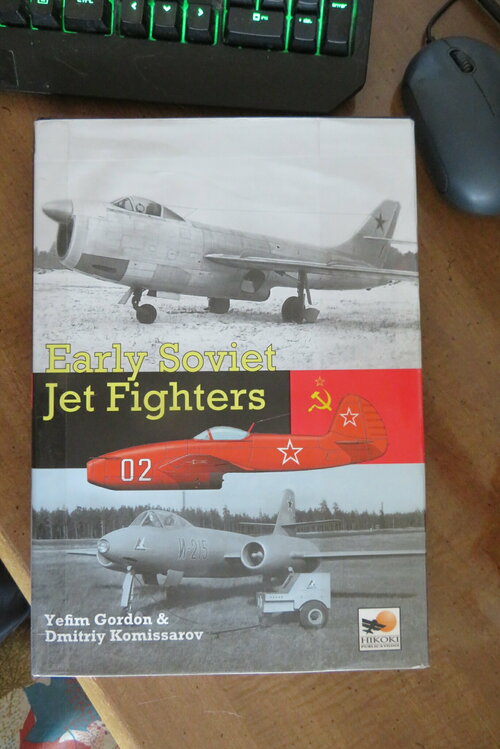
martinbayer
ACCESS: Top Secret
- Joined
- 6 January 2009
- Messages
- 2,868
- Reaction score
- 2,947
The next issue in that configuration is then exposure of any external centerline bomb to the hot jetstream from the forward and downward positioned turbojet engine. This might lead to the need for an internal bomb bay, which in turn might result in more or less severe circulatory airflow issues, with a released bomb potentially being trapped in the bay by the external aerodynamic conditions and interactions, as happened initially to the Vickers Valiant.There is the practical issue of, where does the bomb go?
Dive bombers of the BT's era carried one large bomb on the fuselage centerline.
Smaller, less useful, bombs could be carried outboard under wings.
Yak 15 configuration has engine and jet pipe in that centerline space.
Creating enough ground clearance to hang a large and useful bomb there would result in overly tall and fragile landing gear, mains and tailwheel both, given the practices of the era;
especially when combined with need to maintain wings at a certain, not-excessive, angle of attack for the takeoff run.
And, how strong would landing gear suitable for carrier operation have to be?
How much weight would tall landing gear of suitable strength for slamming down on a pitching carrier deck add to airframe?
To me the entire concept is hugely impractical.
True Actually what would the proper configuration for a dive bomber be if they were still in use or if the jet was invented and included earlier (like 30s)? Essentially a modernized dive bomber maybe with an improved bomb site (sort of like a multiple attack aircraft)
?
The next issue in that configuration is then exposure of any external centerline bomb to the hot jetstream from the forward and downward positioned turbojet engine. This might lead to the need for an internal bomb bay, which in turn might result in more or less severe circulatory airflow issues, with a released bomb potentially being trapped in the bay by the external aerodynamic conditions and interactions, as happened initially to the Vickers Valiant.
?
southwestforests
ACCESS: Top Secret
- Joined
- 28 June 2012
- Messages
- 609
- Reaction score
- 910
I, who obviously didn't live in the 1930s, would go for a twin engine design which clears up the aircraft centerline,what would the proper configuration for a dive bomber be if they were still in use or if the jet was invented and included earlier (like 30s)
or,
sticking to single engine designs, the what came to be conventional location of jet engine along fuselage's central axis line.
And if I was the potential aircraft carrier crew or Captain, I would absolutely Not want that underslung jet engine pointing directly at my nice, pretty, wooden carrier deck.
And, the Soviet designers eventually solved the tailwheel problem in that configuration by using metal tailwheels on at least one design of the style, stainless steel wheels, I think.
As any of the mentioned aircraft carrier persons I would very much not want those steel wheels operating from my nice pretty wooden deck.
Tricycle gear jets, yeah, I can live with those.
Taildragger jets? A very hard NOPE, not on my ship.
So, a configuration of single engine on fuselage centerline, or, twin engines, somewhere, be it wings or fuselage, & tricycle landing gear.
Last edited:
So like a p-80 or p-59 or usn FH or f9f or rn attacker or vampire?
Attachments
Last edited:
martinbayer
ACCESS: Top Secret
- Joined
- 6 January 2009
- Messages
- 2,868
- Reaction score
- 2,947
I wonder what the tactics employed by the Me-262 in its "Schnellbomber" missions were - I know that ironically a brace of those were unsuccessfully used near the end of WWII to try to destroy a bridge across the river Main adjacent to my home town of Aschaffenburg in order to try to slow down the progress of American forces from the West, but I haven't been able to find out further details of the attack, although I could well imagine some kind of dive approach might have been used against a stationary passive/non defensive target like that.I, who obviously didn't live in the 1930s, would go for a twin engine design which clears up the aircraft centerline,
or,
sticking to single engine designs, the what came to be conventional location of jet engine along fuselage's central axis line.
And if I was the potential aircraft carrier crew or Captain, I would absolutely Not want that underslung jet engine pointing directly at my nice, pretty, wooden carrier deck.
And, the Soviet designers eventually solved the tailwheel problem in that configuration by using metal tailwheels on at least one design of the style, stainless steel wheels, I think.
As any of the mentioned aircraft carrier persons I would very much not want those steel wheels operating from my nice pretty wooden deck.
Tricycle gear jets, yeah, I can live with those.
Taildragger jets? A very hard NOPE, not on my ship.
So, a configuration of single engine on fuselage centerline, or, twin engines, somewhere, be it wings or fuselage, & tricycle landing gear.
- Joined
- 25 July 2007
- Messages
- 4,140
- Reaction score
- 3,770
this is weird and its navy? ... lol what carrier deck why dose this have a tail dragger when its a jet on a carrier!
Because the Supermarine Type 510 was designed to Specification E.1/46 ... meaning it was an entirely experimental aircraft. As such, it was economical to simply retain the fuselage and undercarriage from the existing Attacker (which you posted in reply #27). Besides that pointy nose probe, only the flying surfaces were changed.
One benefit of retaining the tailwheel arrangement was that direct comparisons could be made between landing-on with the Type 510 versus the in-service Attacker. One of several downsides was that the Type 510 couldn't be catapulted back off the carrier deck again (RATO was required). But, then again, take-off comparisons were not the point of the exercise.
After such comparisons were made, prototype Type 510 VV119 was modified into the first Type 535 Swift - complete with 'normal' tricycle landing gear. That development led on to the production-model Type 541 Swift (make of that what you will).
Obviously, none of this has anything to do with your original query. Is it your intent to simply pick random jet fighters which you think look "weird" and then re-imagine them as what-if dive bombers?
Similar threads
-
French Navy Dive-Bomber Projects 1941/42 (should be)
- Started by hesham
- Replies: 2
-
Making sense of USN WWII dive/torpedo bomber projects
- Started by Colonial-Marine
- Replies: 5
-
Blackburn naval torpedo/dive bomber projects
- Started by Tim52413
- Replies: 4
-
Arkhangelsky high speed bomber SBB-1 and dive bomber SBB-2
- Started by blackkite
- Replies: 3
-

